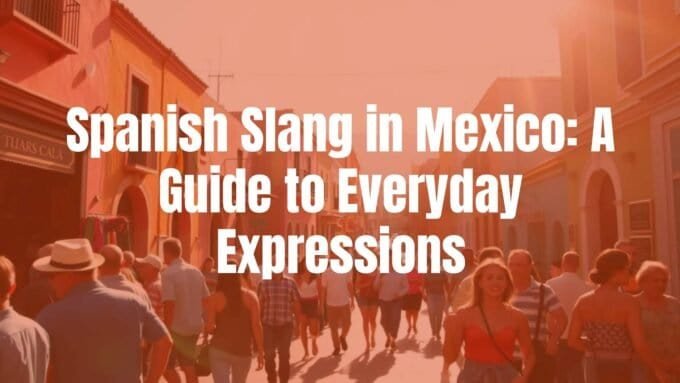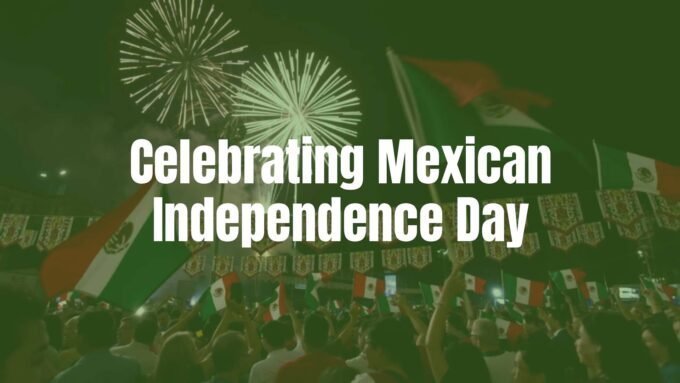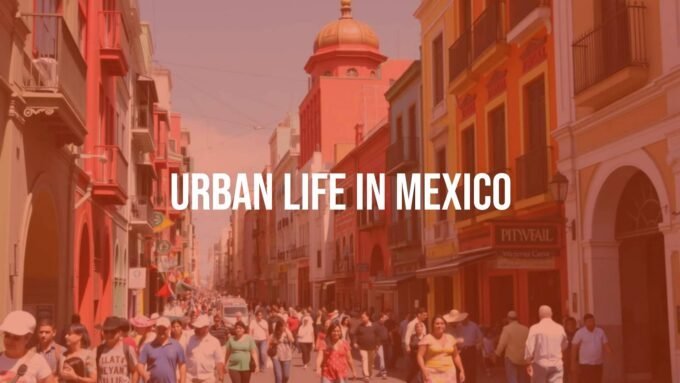Mexico is a country full of lively colors, deep history, and amazing cities. Traveling here means getting to see everything from busy big cities to peaceful towns by the water. Each place you visit in Mexico has its own character and stories to share. You can find ancient ruins, tasty food, and exciting nightlife all across the country. There’s always something to discover, whether you love learning about history, trying new foods, or simply soaking in the lively streets. This mix of old and new makes Mexico one of the top vacation spots in the world.
What draws many visitors to Mexican cities is how well they mix old traditions with modern life. People might first come for the famous beaches, but many end up finding much more in the cities-art, culture, and local events create a deep and memorable experience. Mexico is known for being affordable, and there are plenty of fancy hotels and nice places to stay. The government does provide regular safety advice, but most tourist spots are safe and well-guarded, so you can focus on enjoying everything these cities offer.

Reasons to Explore Mexican Cities
Visiting Mexican cities is like opening a box of surprises. Each city highlights a different part of the country’s identity. Whether you want to see ancient landmarks, taste traditional dishes, or experience local celebrations, there’s always something special in store.
Mexico’s Many Cultures
Mexico is known for its rich mix of cultures. In cities like Oaxaca, you’ll see old Indigenous customs come alive through events like the Guelaguetza festival, as well as in local food based on recipes passed down for generations. San Cristóbal de las Casas is a mountain town that shows a unique blend of Indigenous and colonial influences. In Mexico City, you’ll notice ancient traditions and modern art mixing together-from colorful murals that tell stories from the past to lively street art.
In cities such as San Miguel de Allende, named a UNESCO World Heritage Site, there’s a strong artistic atmosphere making everyone feel welcome. Local festivals, handmade crafts, young crowds, and even the city buildings all add to the city’s charm. For example, Mérida’s pastel colonial houses and the Baroque churches in Puebla each show off their own local style and historical story.
Historical Sights and Nature Spots
Many Mexican cities are close to key historical or natural attractions. Tulum, for example, combines beautiful beaches with ancient Mayan ruins, letting you explore and relax all at once.

Mexico’s landscapes are just as varied as its history. The Yucatán Peninsula is filled with natural swimming pools called cenotes. On the Pacific coast, cities like Puerto Vallarta and Mazatlán have beautiful mountain views next to the sea, offering plenty of outdoor fun such as whale watching or surfing. Even places away from the coast, like Monterrey, give you great access to hiking and national parks. Unusual spots like the pink lakes of Las Coloradas or the rock formations at Hierve el Agua make for unforgettable adventures.
Food and Nightlife
For lots of travelers, trying Mexican food is a main reason to visit. Oaxaca City is often called Mexico’s food capital, famous for dishes like mole, tlayudas, and tamales. Here, you can enjoy tasty street food or take a class to learn cooking skills. Puebla stands out for its mole poblano and chile en nogada, a dish with colors matching the Mexican flag.

Nightlife in Mexican cities is just as exciting as the food. In Cancun and Puerto Vallarta, you’ll find lively clubs, while Oaxaca offers bars that specialize in mezcal, a local spirit. Mexico City’s restaurants and nightlife are some of the best in the world, from trendy spots to laid-back cantinas. Smaller cities like San Miguel de Allende provide great food and wine experiences too, so there’s something for everyone, day and night.
Best Time to Visit Mexican Cities
Picking the right time for your trip can help you get the most out of your vacation. Weather and holidays vary across the country, so knowing what to expect helps you plan what’s best for you-whether that’s sunshine on the beach, joining a festival, or seeing famous landmarks without the crowd.
Understanding the Seasons
The busiest travel season in Mexico is from November to April. Most places, especially by the coast, stay dry and warm, perfect for beach trips or exploring outdoors. Cancun, Tulum, and Puerto Vallarta shine during these months with pleasant weather for swimming and exploring.
From June to October, it’s hurricane season around the beaches, and the weather is hotter with more rain, but you’ll find smaller crowds and better prices. Inland cities often get just a bit of rain, making them comfortable to visit even in summer. Rain showers usually don’t last long, so you’ll still have plenty of time to see the sights.
Festivals and Events
Mexico is full of celebrations. The Day of the Dead (Día de Muertos), at the end of October and early November, is one of the biggest and most colorful events, especially in Oaxaca City, which hosts candlelit ceremonies, parades, and decorated altars.

Other festivals include Guelaguetza in Oaxaca in July and Holy Week processions in Taxco. San Miguel de Allende is famous for its almost continuous religious festivals, often with fireworks. Visiting during these times gives you a true taste of Mexican culture and tradition.
Safest Cities in Mexico for Tourists
Safety is a common question for travelers, but plenty of Mexican cities are known for being secure, especially where tourists usually go. Picking these places can help make your vacation stress-free.
Cities with Solid Safety Records
| City | Why It’s Considered Safe |
|---|---|
| Mérida | Regularly ranked as one of the safest cities, with a warm, peaceful feel and lots of history. |
| San Miguel de Allende | Popular with both tourists and locals, with a friendly atmosphere and well-kept old town. |
| Querétaro | Well-preserved historical center, good infrastructure, and calm environment. |
| Cancun and Los Cabos | Tourist areas are well-watched, especially during busy seasons. |
Tips for Staying Safe
- Be mindful of your surroundings, especially at night and in busy areas.
- Keep valuable items out of sight and try to blend in rather than stand out as a tourist.
- Use trusted transportation like official taxis or ride-share apps, especially after dark.
- Stay in well-known tourist areas and avoid wandering into unfamiliar places, especially alone.
- Keep important documents and extra money stored securely.
- Learning simple Spanish phrases can help with getting around and connecting with locals.
- Consider buying travel insurance for extra security.
Top Mexican Cities by Region
Mexico covers a big area, and its cities reflect different landscapes and cultures, whether you’re looking for Caribbean beaches, colonial buildings, or lively Pacific towns.
Highlights of the Yucatán Peninsula
- Tulum: Known for its blue sea, sandy beaches, and Mayan ruins overlooking the water. Also a popular place for yoga, eco-tourism, and visiting cenotes (natural freshwater pools).
- Isla Holbox: A peaceful island with no cars. It’s famous for relaxing beaches, swimming with whale sharks, and night-time glowing plankton, depending on the season.
- Las Coloradas: Famous for its pink lakes, which you can visit on a day trip, often combined with seeing wildlife and nearby ruins.
- Cozumel: A diver’s dream, known around the world for amazing reefs and sea life. You can also enjoy beaches, boat tours, and fishing.
- Valladolid: Colorful, historic town perfect as a base for Chichen Itza and local cenotes. The town itself has lively markets, nice restaurants, and pretty colonial streets.
- Mérida: The area’s biggest city, full of museums and history. Known for safety and a strong Mayan heritage, with special food and cultural sites.
- Cancún: Probably Mexico’s most famous tourist city, loved for its beaches, nightlife, water sports, and easy access to cultural sites.
Central Mexico’s Colonial Cities
- Mexico City: The capital is huge and full of life, with famous museums, ancient ruins, big parks, and neighborhoods with their own style.
- San Miguel de Allende: Well known for its colorful streets, art galleries, friendly community, and being easy to walk around.
- Guanajuato: A photogenic city with bright houses, narrow streets, and a lively student scene, set among rolling hills.
- Puebla: A short trip from Mexico City, famous for beautiful churches, tile-covered buildings, great pottery, and special dishes.
- Querétaro: Known for its historic center, baroque buildings, and nearby rock formations, it combines culture and nature.

Pacific Coast Cities
- Puerto Vallarta: A favorite with all kinds of travelers, offering mountain views, a famous boardwalk, lively old town, and many outdoor activities.
- Mazatlán: Known for long beaches, fewer tourists, great local food, and a long boardwalk for sunsets and festivals.
- Ixtapa Zihuatanejo: Two cities next to each other, with Ixtapa focused on resorts and Zihuatanejo keeping a small-town, artsy feel.
Southern Mexico
- Oaxaca: Mountain city famous for its markets, colorful streets, food, and indigenous history. Nearby are prehistoric ruins and unique rock formations.
- Puerto Escondido: A laid-back beach town, great for surfing, simple living, and seeing sea turtles or glowing plankton at night.
- San Cristóbal de las Casas: In Chiapas, a cool mountain town with a strong indigenous presence, handicraft markets, and good base for seeing canyons and waterfalls.
Northern Mexico and Baja
- Monterrey: Modern city surrounded by mountains. Known for business, hiking, parks, and museums.
- Cabo San Lucas: At the tip of Baja peninsula, offers fancy resorts, beautiful beaches, whale watching, and great sunsets at natural rock formations.
- La Paz: Quiet city known for beautiful beaches and as a starting point for swimming with whale sharks or visiting nearby towns like Todos Santos.
Most Popular Cities for Travelers
| City | Why Go? |
|---|---|
| Mexico City | Capital with museums, a lively arts scene, lots of neighborhoods, and food variety. |
| Guadalajara | Birthplace of mariachi and tequila, relaxed city with culture, food, and shops. |
| Monterrey | Industrial city with mountain backdrops and modern attractions. |
| Cancún | Famous for its beaches, resorts, and exciting nightlife. |
| Mérida | Safe, full of history, and known for Mayan heritage and colorful streets. |
| Oaxaca City | Foodie capital, home to festivals, markets, and nearby ruins. |
| Puebla | Stunning old buildings, local arts, and special food dishes. |
| Puerto Vallarta | Mix of beaches, mountains, friendly locals, and nightlife. |
| San Miguel de Allende | UNESCO site, beautiful colonial center, art, and friendly vibe. |
| Guanajuato | Colorful, artistic, and famous for its narrow alleys and mountain views. |
Underrated and Charming Small Cities
- Campeche: Seaside city with old fortress walls, pastel buildings, and a peaceful setting.
- Taxco: Silver-mining town with hilly streets, famous for jewelry and Easter processions.
- Valladolid: Inland colonial town with great food, colorful streets, markets, and close to cenotes and ruins.
- Morelia: Little-known city with stunning pink-stone buildings, wide plazas, and a rich history-a UNESCO site.
- Mazatlán: Less touristy coastal city with beaches, carnival celebrations, and local street food.
- San Cristóbal de las Casas: Mountain town with strong indigenous culture, cool weather, and nature trips nearby.
- San José del Pacífico: Small highland village in Oaxaca, known for nature trails, views, and local traditions.
- Valle de Bravo: Town by a lake, popular for outdoor sports and seeing monarch butterflies from November to March.
- Ajijic: On Lake Chapala, known for its artist community, a calm lakeside setting, and mild weather.
Useful Tips for Visiting Mexican Cities
Guided Tours and Experiences
Booking guided tours can help you learn about the culture and sights in more depth. Services like GetYourGuide offer tours from visits to ruins and cooking classes to wrestling shows in Mexico City. In beach towns, you might book swimming with whale sharks, while in cities like Guadalajara, you can tour a tequila distillery. These tours make travel easier and help you discover more than you might on your own.
Transportation
- Big cities like Mexico City or Guadalajara have extensive metro or bus systems, which are cheap and reliable.
- Uber and other ride-share apps work well in most cities.
- In smaller towns, walking is often the best way to get around.
- Some places like Isla Holbox rely on golf carts and bikes.
- For longer trips, Mexico has a good bus network. Car rentals can also be a good option if you want flexibility, but make sure you’re comfortable with local traffic.
Where to Stay
You’ll find every kind of accommodation in Mexico, from fancy hotels (many bookable on Booking.com) to hostels (through HostelWorld) and vacation rentals. Budget, family, or luxury travelers can all find something suitable. Services like Wander offer high-end vacation homes in places like Nayarit and Cabo, while local guesthouses and boutique hotels can make your experience even more special.
Budgeting Your Trip
- Mexico is generally cheaper than many Western countries, though resort towns can be more pricey, especially in high season.
- Eating street food and using local transportation saves money.
- Staying in smaller cities or away from top tourist spots helps your money go further.
- Entry fees for popular sites like Chichen Itza are set, but you can save by using public buses.
- A little extra for emergencies and travel insurance is a smart idea.
Frequently Asked Questions
Where Should I Go for My First Visit?
The Yucatán Peninsula is a great starting point, especially Cancun, because it offers beaches, history, and easy travel. Mexico City is also a solid choice for those interested in culture and food, while San Miguel de Allende is perfect for art lovers wanting a smaller, scenic city.
What Are the Most Visited Cities?
Mexico City, Cancun, Puerto Vallarta, Los Cabos, Guadalajara, and Oaxaca are the cities most travelers choose, each for their own blend of culture, history, or beaches.
Are Mexican Cities Good for Families?
Yes, many Mexican cities are family-friendly, with resorts, safe beaches, amusement parks, museums, and events aimed at kids and families. Cancun, Puerto Vallarta, and Mérida are especially good for family trips.
How Long Should I Spend in Each City?
- Big cities like Mexico City: at least 4-5 days to see main sights and take day trips.
- Beach destinations: 5-7 days for relaxation, activities, and excursions.
- Smaller colonial towns: 3-4 days is usually enough.
- If seeing several places, plan 2-3 days in each small city for a nice overview.
Final Thoughts
Traveling through the cities of Mexico is a great way to explore the country’s history, culture, and food. Whether you’re interested in ancient ruins, art, beaches, or local traditions, there’s a city or town that fits what you want. You’ll find both adventure and comfort at every stop, and every visit will likely make you want to come back for more. Mexico’s variety and welcoming people make every trip special, so get ready to experience the many sides of this wonderful country.














Leave a comment